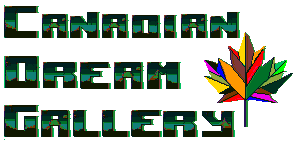 Les Rêves Canadiens
Les Rêves Canadiens
Kandinsky, Wassily. Concerning the Spiritual in Art. New York: Dover, 1977.
Along with the years of funding by world religions, and the hours of religious
contemplation of technique; art has had reason to be concerned with spiritual values.
Kandinsky opens this whole subject and looks at it from the artist's view point not the art
critic or spiritualist and thanks to his bravery and naiveté was able to plant a seed for the
future.
It is worth noting that the translator M.T.H. Sadler was a friend of the artist and
very concerned that this text not be lost as a raving of a mad artist or theosophist. He notes
this in his introduction by reference to the English single minded respect for linear thinking.
My first impression while reading the book was Kandinsky's use of the word
today; I needed to remind myself that he wrote this book in 1910. Today's art is not
Kandinsky's art, but I am sure he had vision of it, in as much as he could. He refers to the
belief that today's art satisfies today's social need, but that only time could prove real art,
the art that transcends subjective needs and is truly objective. This sounds a lot like
Gurdjieff who named only two real works of art in the western world: the Mona Lisa, and the
cathedral at Mont Saint Michel. Kandinsky is a little more forgiving; he is also more
socialistic and views art from the materialistic level looking more for its inner value and not
its market value.
Music is the art form that is totally committed to this spiritual search and the
impetus that leads the world into this search. It opens the way for the Neo-Impressionists to
depict all that is seen in nature not just that which is seen at the surface.
He begins to pursue the value of colour and form, perhaps leading the way for
Itten and Alber. It is not hard to understand, after what he said of music leading the way,
that he sees music in terms of colour. His own direction was toward `form' with the goal
being to, "appeal less to the eye and more to the soul. This `concealed construction' may
arise from an apparently fortuitous selection of forms on the canvas."
His prediction in his final paragraph has to certain degrees come true; we have
moved away from but also toward the statement of the Impressionist "that they could
explain nothing...art came upon them by inspiration." We did this in some ways as a blind
thrashing search for direction, but this is part of being human and looking up while working
with the earth. Thank God his last statement about an influx of new spiritual leaders came
true and that some had the compassion to tell us to be happy and create.
Copyright © Creative Reflections
[email protected]
 Les Rêves Canadiens
Les Rêves Canadiens Les Rêves Canadiens
Les Rêves Canadiens